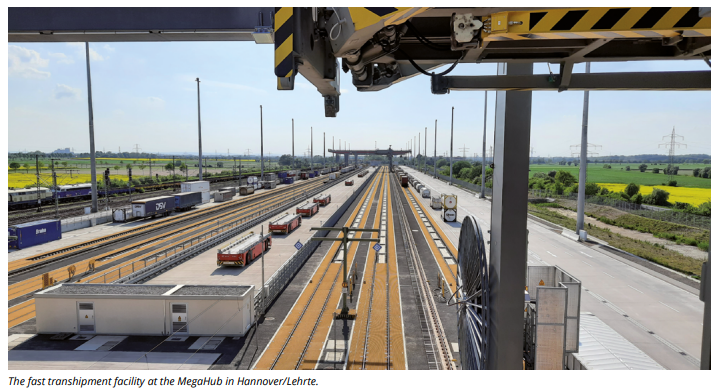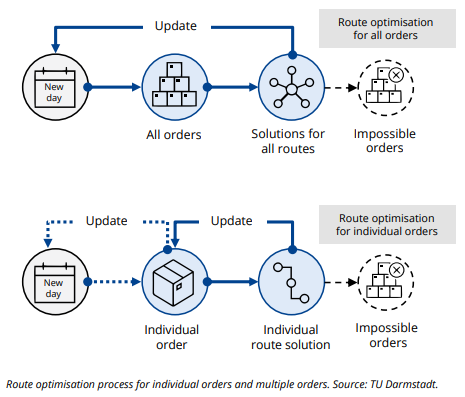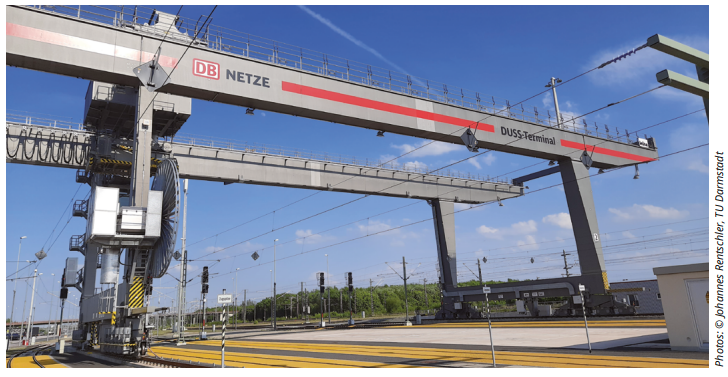Optimising train operations in combined road-rail transport
Innovative solutions derived from research are what are needed if we are to succeed in shifting more freight transport to railways using combined road-rail transport. As part of their goal of increasing the efficiency of train operations, the Chair of Management and Logistics at the Technical University of Darmstadt is researching various optimisation strategies related to the transshipment terminal interface.
Prof. Dr. Ralf Elbert, Professor in the chair of Management and Logistics, and Hongjun Wu M.Sc., Research Associate, chair of Management
and Logistics, Technical University of Darmstadt
Due to its economic competitiveness, combined transport has previously been used between major economic hubs that offer direct trains. As a result, the service offering was limited to locations with lower volume and very scattered traffic flows. To boost the potential of combined transport in all regions, a major junction was created at the Hannover/Lehrte location: known as the “MegaHub”. The MegaHub serves as an interface for the transshipment of combined transport and allows for the formation of single-destination block trains with loading units from many different origin train stations—no shunting necessary. The goal is to use innovative techniques to enable the speedy transshipment of loading units and significantly accelerate overall transit time.
Increasing the efficiency of train operations
On the subject of this innovative fast transshipment terminal, the Chair of Management and Logistics at the Technical University of Darmstadt is conducting a research project entitled “KV-HUB – Pilotierung und Test neuer innovativer KV-Produkte und Verfahren unter Einbindung der MegaHub-Schnellumschlaganlage in Hannover/Lehrte” [Transshipment hub – piloting and testing of new, innovative transshipment products and processes involving the MegaHub fast transshipment facility in Hannover/Lehrte] in collaboration with Kombiverkehr GmbH & Co KG. It is funded by the German Federal Ministry of Transport and Digital Infrastructure as part of the “Zukunft Schienengüterverkehr” [Future of rail traffic] federal programme.
The research project aims to improve the efficiency of transport services linked to the transshipment hub and to develop its potential for accommodating more transport orders. Research is being conducted on three optimisation issues:
- Optimising routes to minimise the overall transit time of all loading units in the network,
- Identifying additional terminal-to-terminal relations for further integration into the MegaHub concept, and
- Minimising delays by making the appropriate scheduling decisions in the event of disruptions.
Previous research has found that the developed optimisation processes simultaneously choose both the best trains and the best transshipment terminals for several transport orders to minimise the overall transit time for all orders. The results of the experimental research studies show that more than 85% of orders can be delivered within three days after the routes have been optimised—a transit time that is acceptable to customers.

Improved Goods Assignment While Simultaneously Optimising Routes
Furthermore, simultaneously planning the routes of several orders has a positive impact on capacity bottlenecks, such as those caused by a strong increase in orders and limited train capacities. In cases of bottlenecks, simultaneous route planning results in improved loading unit assignment to different trains compared to individual route planning. Consequently, loading units are delivered to their destination terminal with faster overall transit times and fewer transshipments. This approach even increases the average capacity utilisation of the trains used. However, accepting a greater number of orders also results in longer response times for customers, which could increase the risk of losing certain customers. Therefore, the intermodal operator must selectively evaluate this potential conflict in order processing.
To summarize, the first optimisation problem in the KV-Hub project has been resolved based on the fixed train schedule. The solution process offers the ability to make better use of the limited resources in the main combined transport flow. However, this gain in efficiency is still limited and continues to be improved by subsequent optimisations to the train schedules and real-time scheduling processes whenever disruptions occur. By increasing the efficiency of train schedules, the KV-HUB project is helping to develop an attractive and environmentally friendly combined transport offering that takes into account business needs and increases the potential for developing new combined transport offerings for low-volume regions.



